Search results for 'red'
-
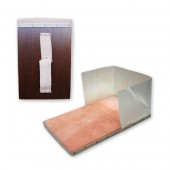
Professional Gilders Cushion
Starting at: £75.00
L.Cornelissen & Son's Professional Gilders Cushions are handmade in London, using the highest quality materials. Soft, buffed suede nap goatskin stretched over a sturdy mahogany veneer panel, secured with brass tacks and some fitted with a genuine parchment windsheild. Learn More -
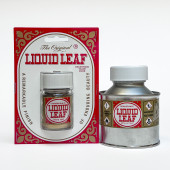
Roberson Liquid Leaf Metallic Paint
Starting at: £12.50
A one-step paint, giving a permanent finish, closely resembling traditional gilding with leaf. Learn More -

Schmincke Akademie Acryl Color Royal Academy of Arts Set
£20.00Schmincke Akademie Acryl Color in association with the RA (Royal Academy of Arts) Learn More -
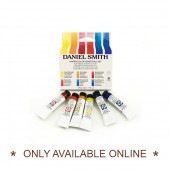
Daniel Smith Watercolour Essentials Set
£36.30The new set has six x 5ml transparent watercolours. The pigments were carefully selected to give you a wide range of colours and values. When mixed together the colours you can create are endless! The Essentials set contains Hansa Yellow Light, New Gamboge, Quinacridone Rose, Pyrrol Scarlet, Phthalo Blue GS, French Ultramarine in 5ml tubes. so you have both cool and warm Yellows, Reds and Blues. *Please note, this product is stored offsite. Please allow extra time for your order to be processed and dispatched. Learn More -
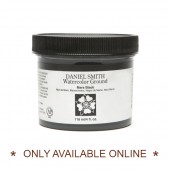
Daniel Smith Watercolour Ground Mars Black 4oz
£10.30Mars Black makes our Luminescent Watercolors “pop” and also provides an exciting, unexpected background for all your standard watercolour paints. Soft pastels, graphite and watercolour pencils show up beautifully on both the buff and black. *Please note, this product is stored offsite. Please allow extra time for your order to be processed and dispatched. Learn More -
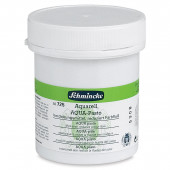
Schmincke AQUA Pasto Medium
Starting at: £20.90
Thickener for tube watercolours. Reduces colour flow, improves gloss. Water soluble. Learn More -
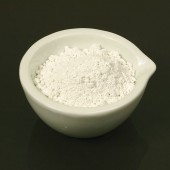
Gypsum
Starting at: £5.70
Gypsum is powdered Calcium Sulphate, a traditional ingredient in gesso grounds used in southern Europe. One of the advantages of preparing your painting surface with gypsum is that it allows for a particularly even absorption of the paint film. It can also be added to acrylic primers to increase absorbency or add tooth to a surface. Learn More -
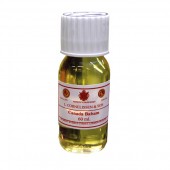
Cornelissen Canada Balsam
Starting at: £39.10
Canada Balsam is an oleoresin, meaning that it is a mixture of essential oils and resin. It comes from the fir tree Abies balsamea, native to Canada and the eastern states of North America. It is notable for its pale colour, clarity and gloss, making it a useful ingredient in recipes for oil-painting mediums.
Learn More -
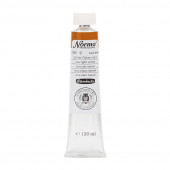
Schmincke Norma Artists' Oil 120ml
Starting at: £19.50
Genuine artists' pigments with highest possible concentration in linseed and sunflower oils. All colours have outstanding brilliance and highest possible lightfastness. Mainly single pigment colours. Learn More -

STABILO CarbOthello Pencil Sharpener
£2.95The Stabilo CarbOthello Sharpener is a short cone sharpener with special blade especially designed for high quality coloured pencils like the Stabilo CarbOthello. The special blade will make sure that your pencil is correctly sharpened and won't split the chalk lead.
Learn More -
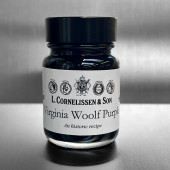
Cornelissen Historical Inks, Virginia Woolf Purple
£6.50This ink is inspired by the distinctive purple ink used by Virginia Woolf for her work and correspondence. Handmade by a master inkmaker, especially for Cornelissen, using a historic recipe based on blackthorn berries. Suitable for fountain pens and work on paper and parchment. Indelible and waterproof over time.
Learn More -
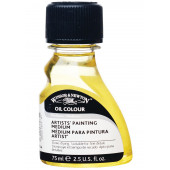
Winsor & Newton Art Painting Medium
Starting at: £9.20
From the Winsor & Newton website: A slow drying, gloss medium which is ideal for fine detail work, glazing and smoothly blended areas with no brush marks. Reduces consistency and improves flow. Suitable for oiling out and enriching dull patches. Resistant to yellowing.
Learn More -
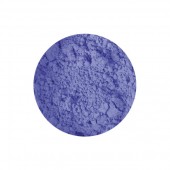
Cerulean Blue Pigment
Starting at: £14.50
PB35
Cerulean Blue is an artificial mineral pigment that is prepared by heating a mixture of Cobalt Chloride and Potassium Stannate. It was first synthesised in the early nineteenth century, becoming more widely used from 1870, when Rowney introduced Coeruleum Blue into their range. It produces a very bright, clear, and unusually opaque blue, hence its name, which is derived from the Latin for "sky-blue", or perhaps "heaven-blue". It has a very low tinting strength meaning that, although it is stable in all media, some artists may choose to bind it in poppy rather than linseed oil, so that the colour isn't affected by the colour of the binder. It creates a fairly flexible paint film, and is a fast-to-medium drying pigment.
Limeproof
Toxicity: B
Learn More -
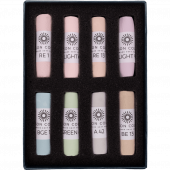
Unison 8 Light Assorted Pastels
£45.60The Unison Light 8 set, specially selected by Unison Colour. This small set contains the essential Light colours from their large range of pastels. Unison Colour Soft pastels allow for ease of use with a highly blendable texture.
Learn More -
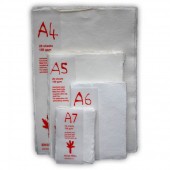
Khadi White Rag Paper Packs 150gsm
Starting at: £2.85
Handmade Paper, 100% Long Fibred Cotton Rag, Acid free, Medium-Rough surface, Deckle Edged. All papers are internally sized with neutral pH size. Learn More -
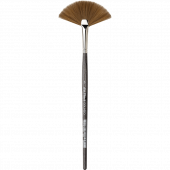
da Vinci Series 422 COLINEO Watercolour brush, fan brush
Starting at: £9.60
COLINEO Fan brush - Composition of straight and wavy synthetic fibres in different lengths with extra fine tips, precise point, high elasticity and colour absorption. - Handle made of water-resistant, hi-tech multicolour laminated wood - Ideal for watercolour painting - Very similar to Kolinsky Red Sable hair brushes Learn More -

Pro Arte Series 9 Liner
Starting at: £4.80
Extra long haired synthetic brush for signwriting or lining. Square tip. Learn More -
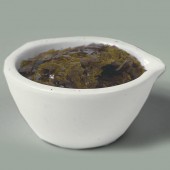
Clear Dewaxed Shellac
Starting at: £9.20
Shellac is a natural resin that is deposited by the female lac insect on the branches of trees in India and Thailand. It is soluble with alcohol, but not with mineral spirits or turpentine. It forms a tough yet flexible film, with many applications. It is suitable as a top coat for gilding when applied thinly, a sealant for porous surfaces, an isolating layer for tempera paintings, a base for pigmented inks, a protective layer for collograph plates, and a warm varnish for wooden floors and furniture. As it is prone to darkening with age, it is not recommended as a varnish for oils, and its solubility can reduce over time. There are various grades of shellac. When mixed with alcohol, it may initially form a cloudy mixture, due to traces of wax in the shellac, but this should become clear once it has dried. The highest grades of shellac are Clear Dewaxed Shellac, which has been de-coloured using the carbon filtering method, Lemon Shellac, and Orange Shellac, which are pale in colour. Button Shellac is less refined and therefore produces a reddish varnish. It was, in fact, widely used as a red dye before synthetic dyes became available. Learn More -
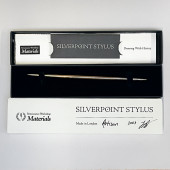
Silverpoint Stylus, Artisan. Renaissance Workshop Materials
£180.00Length 190 mm. For use on prepared paper. Hand-forged in London from silver bullion. Renaissance Workshop Materials are historically authentic drawing materials and tools, which would be recognisable to the artists of Renaissance Europe. Each product is made in the workshop by hand, using historical methods. Each product is borne from the same historical, European craft tradition, as the drawings and artworks from the Renaissance. In the words of the artisan maker, 'We make these materials in order to experience the historical craft and method of drawing in the most authentic way possible.' Learn More -
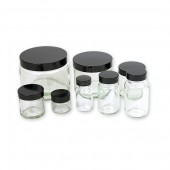
Squat & Powder Jars
Starting at: £0.75
Squat and Powder Jars in glass and plastic. *Please note, our glass jars are fragile, although they are packed very carefully we cannot guarantee they will arrive safely. Cases of jars are stored offsite, please allow extra time for your order to be processed and dispatched. Learn More -
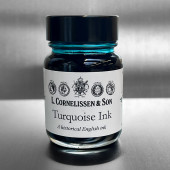
Cornelissen Historical Inks, Turquoise
£6.50This turquoise ink is a beautiful, transparent, deep blue-green. It can be layered for deeper shades; when used at full opacity it is a deep viridian green, and when diluted with water it reveals a marked blue undertone. Made from a blend of botanical dyes, this ink is not fully lightfast.
Not suitable for fountain pens. Learn More -
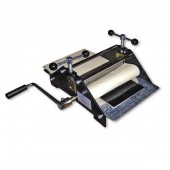
Miniature Table Presses
Starting at: £311.80
Type of print: General Intaglio techniques and Monotype. Plate thickness needs to be no higher than 1mm. YTI18 - Width of roller 18cm, Upper roller diameter 35mm, Lower roller diameter 35mm. YTI26 - Width of roller 25cm, Upper roller diameter 35mm, Lower roller diameter 35mm **please note - blankets not included** Learn More -
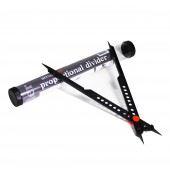
Accurasee Proportional Divider
£15.00A drawing tool for transferring scale. Align your desired subject matter in the small end of the divider and transfer the spacing of the larger end to your drawing surface. Learn More -
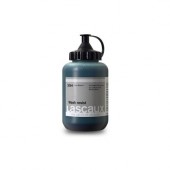
Lascaux Wash Resist 500ml
£38.70This coloured granular resist is painted on the plate and used in conjunction with Lascaux Spray/aquatint to create unusual etched effects similar to watercolour or tusche washes. Learn More -
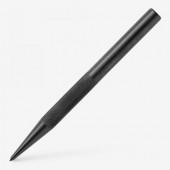
Easy Grip Crible Point Squat No 94
£15.76Easy Grip Crible Point Squat #94 Heavy duty tool with tapered shaft ending in a point Crible points are designed to put small holes or indentations in the surface of the plate, creating a dotted or stippled pattern. Learn More -
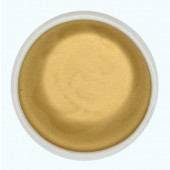
Japanese Shell Gold
Starting at: £28.00
Japanese shell gold in ceramic pans.
Shell gold, so named because it was historically made and stored in shallow shells such as mussel shells, consists of finely powdered genuine gold mixed with a variety of gums. This Japanese shell gold range is made using the highest quality handmade Japanese gold and precious metal powders bound with Nikawa gelatine glue.
Mix with a bit of water and apply in the same way as watercolour (a drop of oxgall can be added to break the surface tension) After drying, it can be burnished to a soft, beautiful lustre using an agate stone burnishing tool.
Contains 0.4g Learn More -
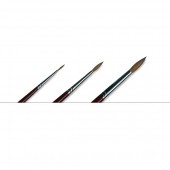
Cornelissen Oil Sable Round
Starting at: £5.55
Finest quality red sable to all types of oil techniques. This brush has good sping even in the smaller sizes and retains its point well. Learn More -
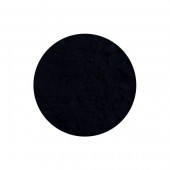
Vine Black Pigment
Starting at: £4.70
PBk8
Vine Black is derived from charred vines, forming an organic pigment of pure carbon. It has been in use since antiquity, providing a cold black with bluish undertones, which creates a blue-grey when mixed with white. It is a very lightfast, slow-drying colour with a medium tinting strength. It requires a wetting agent to disperse properly, and is not suitable for use in fresco, mortar or cement, as the water-soluble impurities within the pigment can create efflorescence.
Toxicity: A
Learn More -
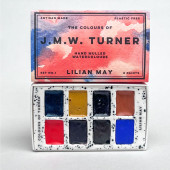
Lilian May, J.M.W. Turner Watercolour Box Set, 8 Wells
£40.00Box Set Dimensions 9 cm x 5.5 cm Utramarine PB29 Burnt Umber PBR6 Genuine Madder NR9 Vermilion PR4, PY1, W21 Mars Orange PY42, PR10 Indigo NB1 Yellow Ochre PY43 Prussian Blue PB27. Learn More -
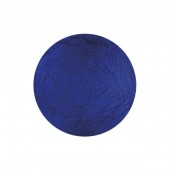
Blue Verditer Pigment
Starting at: £7.50
** While stocks last ** Blue Verditer, sometimes referred to as Bremen Blue, is a synthetic form of Azurite, or copper-calcium carbonate. It has a weak tinting strength and is sligtly transparent. It works best in water-based binders, as the acidity of linseed oil can cause discolouration.
Learn More
Larger sizes available on request





